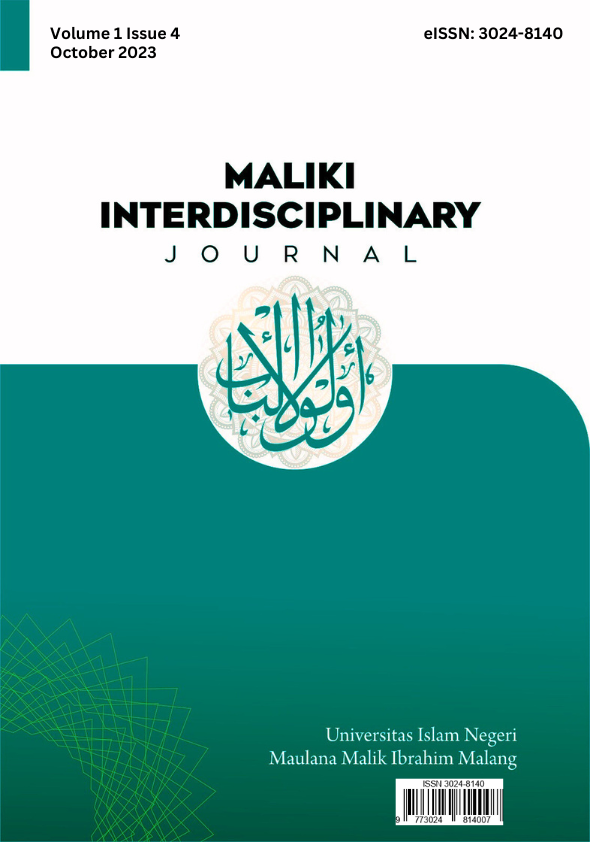Poetic devices analysis
The effect of rhyming words on creating mood in Adi Kusrianto’s poem “Beautiful Mourn”
Abstract
Rhyme is one of great poetic devices for a poet to express their emotions and experiences. The way rhyme is used in a poem can transmit certain moods to the readers. Therefore, this study aimed to described the effect of rhyming words on creating mood in Adi Kusrianto’s poem “Beautiful Mourn” based on Attridge (1995) theory. It employed descriptive-qualitative methodology and the data were collected in the form of words. The study results found there are six different words included turned, dead, head, thorns, storm, and mourns in two stanzas that provided a starting point for understanding the role of rhyme in shaping the aesthetic and emotional qualities of “Beautiful Mourn”. The carefully selected words and their placement in the rhyme scheme helped establish a specific mood successfully. The researcher found that through the rhyming words used within the poem, “Beautiful Mourn” is a charming piece of art that skilfully weaves the themes of sorrow and beauty, creating a mood of sad, mourning, and weeping in a harmony.
Downloads
References
Attridge, D. (1995). Poetic rhythm 1-4. Cambridge University Press. http://www.cambridge.org
Glaser, B. & Culler, J. (2019). Critical rhythm.pdf (First edition). Fordham University Press.
Firdausi, A. N., Perez, L. C. D., & Setiawan, T. (2023). Pragmatic level analysis of ‘Aku’ by Chairil Anwar poetry translation. PARADIGM: Journal of Language and Literary Studies, 6(1), 39–50. https://doi.org/10.18860/prdg.v6i1.20451
Fitriyah, U. (2020). Rhetorical moves in thesis introduction written by English major students. paradigm: Journal of Language and Literary Studies, 3(2), 119–132. https://doi.org/10.18860/prdg.v3i2.10229
Khoiriyah, W., Masitoh, S. & Muniroch, S. (2020). Subalternism in Oodgeroo Noonuccal’s selected poems. PARADIGM, 1(2), 91–106. https://doi.org/10.18860/prdg.v1i2.10096
Marcus, L. (2021). Rhythm. In L. Marcus, Oxford Research Encyclopedia of Literature. Oxford University Press. https://doi.org/10.1093/acrefore/9780190201098.013.1089
Polkinghorne, D. E. (2005). Language and meaning: Data collection in qualitative research. Journal of Counseling Psychology, 52(2), 137–145. https://doi.org/10.1037/0022-0167.52.2.137
Cureton, R. (2019). Review of Attridge. Duke University Press. https://www.jstor.org/stable/455304
Sherry, J. F., & Schouten, J. W. (2002). A role for poetry in consumer research. Journal of Consumer Research, 29(2), 218–234. https://doi.org/10.1086/341572
Wahibullah, M. G., & Indah, R. N. (2021). The Effectiveness of developing students’ ability in writing English poetry through hypnotic writing. Jurnal Ilmiah Bahasa Dan Sastra, 5(1). https://jurnal.umk.ac.id/index.php/kredo/index
Copyright (c) 2023 Aulia Mar'atussolekhah

This work is licensed under a Creative Commons Attribution-NonCommercial-ShareAlike 4.0 International License.
- Authors retain copyright and grant the journal right of first publication with the work simultaneously licensed under a Creative Commons Attribution License that allows others to share the work with an acknowledgement of the work’s authorship and initial publication in this journal.
- Authors are able to enter into separate, additional contractual arrangements for the non-exclusive distribution of the journal’s published version of the work (e.g., post it to an institutional repository or publish it in a book), with an acknowledgement of its initial publication in this journal.
- Authors are permitted and encouraged to post their work online (e.g., in institutional repositories or on their website) prior to and during the submission process, as it can lead to productive exchanges, as well as earlier and greater citation of published work.





